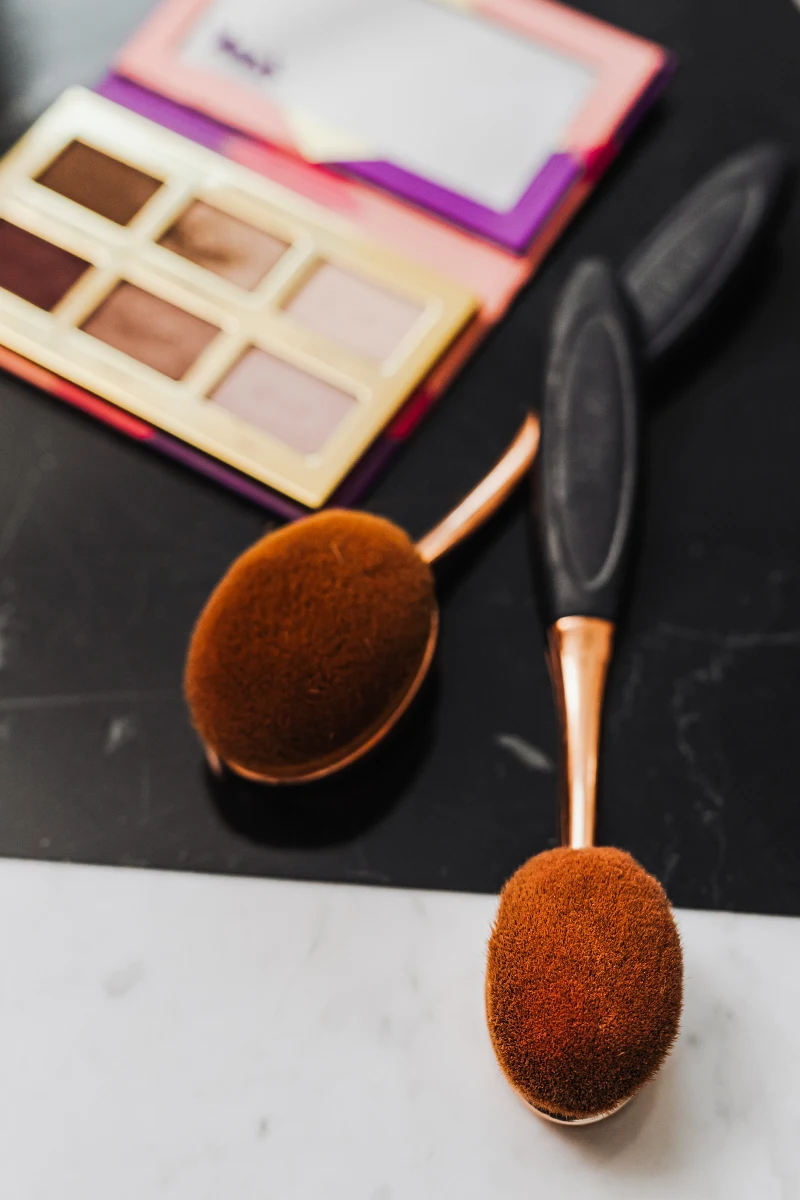Photo: Romy Matthijs
Makeup brushes and sponges are essential tools in every beauty enthusiast's kit, helping us achieve flawless looks day after day. However, they can quickly become a breeding ground for bacteria, dirt, and makeup residue if not cleaned and maintained regularly. Keeping your makeup brushes and sponges clean is not only essential for hygiene but also crucial for ensuring the longevity of your tools and the quality of your makeup application. In this guide, I'm going to show you a few effective techniques and products to help you keep your essential makeup brushes and sponges clean and fresh.
The Most Popular Tools for Cleansing Makeup Brushes
Before diving into the cleaning process, it's essential to familiarize yourself with the tools that will help you maintain your makeup brushes effectively:
- Washing Pad for Brushes: A silicone washing pad with various textures and grooves is perfect for deep-cleaning makeup brushes. These pads provide a gentle yet thorough scrubbing surface for your brushes, ensuring the removal of product buildup and bacteria.
- Sponges and Brushes Cleansing Mat: Similar to washing pads, cleansing mats are designed with different textures to help agitate makeup residues and impurities from your brushes and sponges. They usually come with suction cups for secure placement in your sink.
- Brush Cleansing Spray: Brush cleansing sprays are quick and convenient options for spot-cleaning brushes between uses. These sprays disinfect and refresh your brushes, making them suitable for daily use.
- Gentle Soap or Brush Cleanser: A mild, anti-bacterial soap or a specially formulated brush cleanser is the foundation of proper brush and sponge cleaning. These products effectively remove makeup residues, oils, and bacteria without compromising the bristles or sponge material.
Photo: Karolina Grabowska
Follow These Simple Steps to Wash Makeup Brushes at Home
For a deeper clean, it's advisable to wash your brushes regularly. Here's a step-by-step guide for washing your makeup brushes at home:
‣ Gather your tools: You'll need a washing pad, gentle soap, baby shampoo or brush cleanser, a towel, and access to lukewarm running water.
‣ Wet the brush bristles: Begin by wetting the brush bristles under lukewarm running water, ensuring they are thoroughly saturated.
‣ Apply cleanser: Apply a small amount of gentle soap or brush cleanser onto the washing pad or your palm.
‣ Swirl and lather: Gently swirl the wet brush bristles over the textured surface of the washing pad or your palm. Use varying motions to create a lather and effectively remove makeup residues, oils, and bacteria. Be careful to don't ruin makeup brush anatomy, and it will you serve longer.
‣ Rinse thoroughly: Rinse the brush thoroughly under running water until the water runs clear, indicating that all makeup residues and soap have been removed.
‣ Squeeze out excess water: After rinsing, gently squeeze out excess water from the bristles, starting from the base and moving toward the tips. Ensure you don't pull or tug on the bristles.
‣ Reshape and dry: Reshape the brush bristles to their original form and lay the brushes flat on a clean towel to air dry. Avoid standing them upright, as water can seep into the handle and loosen the bristles.
What Cleansing Product to Choose for Makeup Brushes and Sponges
When selecting a cleansing product for your makeup brushes and sponges, it's essential to choose something gentle yet effective. Here are some options:
Mild Soap: A gentle, anti-bacterial soap is an accessible and effective choice for cleaning brushes and sponges. Look for a fragrance-free option to minimize the risk of skin irritation.
Brush Cleanser: Many cosmetic brands offer specially formulated brush cleansers designed to remove makeup residues and bacteria while maintaining the integrity of your brushes.
Baby Shampoo: Baby shampoos are known for their gentle formula, making them suitable for cleaning makeup brushes and sponges. Opt for a mild, tear-free baby shampoo.
Liquid Castile Soap: Liquid Castile soap is an all-natural and eco-friendly option that works well for cleaning makeup tools. It's gentle on both bristles and sponges.
Makeup Sponge Cleanser: For makeup sponges, consider investing in a sponge cleanser designed to break down makeup residues and thoroughly clean the sponge material.
- Can I Clean Brushes With Micellar Water?
Micellar water, known for its ability to remove makeup from the skin gently, may be tempting to use for cleaning brushes and sponges. However, it's not the most effective choice for deep-cleaning these tools. Micellar water may remove some surface makeup, but it may not thoroughly disinfect or break down long-lasting makeup residues, oils, and bacteria trapped within the bristles or sponge material.
While micellar water can be used for quick spot cleaning in a pinch, it's advisable to use it in conjunction with a proper brush cleanser or soap to ensure a thorough and hygienic cleaning process.
Summarizing...
Properly maintaining your makeup brushes and sponges is essential for not only extending their lifespan but also ensuring your makeup application remains smooth and hygienic. By using the right tools, cleaning products, and techniques, you can keep your makeup brushes and sponges clean, fresh, and ready to create stunning looks. Remember to regularly clean and disinfect these tools to promote skin health, prevent breakouts, and maintain the quality of your makeup products. So, embrace these brush and sponge care tips and elevate your makeup game to a whole new level of perfection.
Lots of love,
Liz








